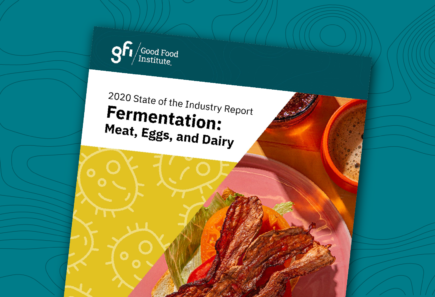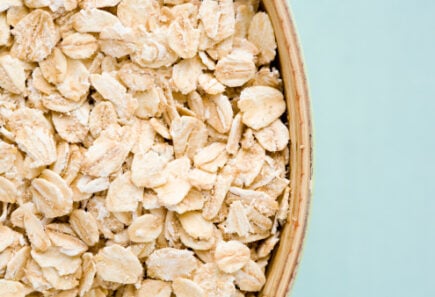Comprehensive microbial screening to identify new protein production candidate strains
Metabolic and physiological characteristics of microbial strains define the commercial potential of any fermentative process, but only a minimal number of strains have been scaled up for commercial production of alternative protein. To broaden the spectrum of available microorganisms, systematic investigation into the physiology of novel microbial strains is needed to identify strains suitable for fermentation.
-
Fermentation
- Research
- Commercial
- R&D
- Production
- Host strain development
- Academics
- Industry
- Startups
- 1 – Inception
Current challenge
In fermentation, considerations ranging from the taste and nutritional value of the product to the tractability and sensitivity of the bioprocess are determined to a large extent by the microbial strain that is used. Currently, the vast majority of biomass and precision fermentation processes use a very limited number of strains. Most biomass fermentation companies making mycoprotein (e.g., Quorn, Prime Roots, Better Meat, Atlast, ENOUGH, Bosque Foods) primarily rely on a very limited number of fungal species, primarily Fusarium venenatum (genus Ascomycota). While Fusarium species offer an efficient, well-described platform for biomass production, the limitation of biomass fermentation to a single species may restrict benefits that could be gained from other species in terms of protein quality or bioprocess options that reduce cost or improve scalability. Similarly, precision fermentation efforts at industrial scales generally rely on a handful of well-characterized species of yeast (e.g., Pichia pastoris, S. cerevisiae, Y. lipolytica) or bacteria (e.g., E. coli, B. subtilis, and lactic acid bacteria). Limits on productivity, titer, and yield for a certain product, or on strain robustness, may be the result of physiological features of the species that make it more or less appropriate for industrial use.
Proposed solution
For biomass fermentation, some research suggests strains other than Fusarium spp. may offer distinct benefits in terms of growth characteristics or nutritional enrichment. For example, fungal strains in many genera (Aspergillus, Malbranchea, Talaromyces, Trichoderma, Chaetomium, Rhizopus) have outperformed Fusarium species with respect to enzyme production and cellulolytic activity on diverse substrates. Other research has demonstrated robust growth of non-Fusarium species (e.g., Pleurotus, Agaricus, and Auricularia) in solid-state fermentation, using industry co-products such as brewer-spent grain, grape bagasse, or other agricultural wastes, and using low-grade inputs such as seaweed.
More complete information regarding the sensory appeal of mycoprotein from alternative strains is only recently becoming available. Similarly, optimization of bioprocess conditions during production has not been described for many species other than Fusarium spp. Considering the vast diversity of fungal species—many of which are poorly characterized from a physiological perspective—a rigorous comparative investigation into the growth characteristics, sensory profiles, nutrient profiles, and amenability to downstream processing of non-Fusarium species is an opportunity for breakthroughs in biomass fermentation. Cultivation of new species will provide opportunities for more efficient manufacturing methods or more sustainable feedstock sourcing, as well as for the potential for new products or improved sensory attributes.
In addition to sourcing and characterizing new fungal species, new non-fungal microbial species should be investigated for their fitness for use in biomass fermentation. Currently, only a handful of companies are pursuing the cultivation of bacterial protein as a food source for humans. As an example, Superbrewed Food has cultivated a novel bacterial strain that generates greater protein yields and volumetric productivities than other microbial strains, as well as superior nutritive qualities and versatility compared to other alternative protein products. While there are regulatory hurdles to overcome with the use of bacterial protein, the establishment of a robust probiotics industry using lactic acid bacteria over the past two decades suggests that there is a regulatory path forward for fermentation of bacteria for human consumption. Bioprospecting for novel, protein-enriched strains in microbiome or environmental systems presents a new horizon for food biotechnology, in which the diversity of wild-type (i.e., non-GMO) species provides a new source of high-performance, high-nutrition protein.
In addition to physiological and bench-scale fermentation studies, systems biology investigations of non-Fusarium strains may discover properties of these organisms relevant to the improvement of protein production. The comprehensive information available from the use of these tools—not available when Fusarium was first developed as an alternative protein source—will provide new insights into the metabolism and capabilities of new strains and suggest opportunities for high-throughput screening of isolates recovered from bioprospecting. Additionally, capabilities for the production of nutritionally novel or desirable sensory molecules not found in Fusarium may be identified in new strains using modern systems biology techniques.
With regard to precision fermentation, comprehensive screening of new species as production platforms is a perpetually active area of research. Fermentation at commercial scales often requires characteristics of robustness, productivity, and resilience that may not be available in the commonly-used platforms of yeast or E. coli. New strains may offer advantages such as high expression levels of recombinant proteins, greater stress tolerance, and unique ability to synthesize novel natural products. Other strains demonstrate remarkable metabolic versatility that suggests their potential for use with non-standard medium inputs such as co-products or side-streams from food processing industries.
Anticipated impact
A scientifically rigorous, systematic investigation into the suitability of novel fungal genera and bacterial strains offers the potential for dramatic strides forward in biomass fermentation. The use of new species will increase the range of textures, flavors, and use cases for microbial biomass as human food. Additionally, providing direction to new companies interested in developing a non-Fusarium-based platform will increase the range, versatility, and complexity of protein products available from new biomass fermentation companies, rather than just new types of Fusarium-based products. Moreover, new types of protein discovered through bioprospecting will result in entirely new products, driven by the diversity and multi-functionality of proteins already available in nature. For precision fermentation, the identification and optimization of new species that can be used as molecular platforms for industrial use can improve productivity, substrate versatility, and fermentation process robustness.
Related efforts
GFI resources

The State of the Industry: Fermentation for alternative proteins
2020 was a year of milestones for the alternative protein-focused fermentation industry. This webinar will provide a global analysis of this rapidly accelerating, transformative market sector.

The science of fermentation
Learn about the emerging role of microbial fermentation in building the next generation of alternative protein products.

Find collaborators
Join the GFIdeas global community of 2,000+ entrepreneurs, scientists, investors, and subject matter experts. Discuss projects on the members-only Slack community, attend monthly seminars, and use the community directory to help you find collaborators working on similar Solutions!
Related solutions
-
Fermentation
Fat production & encapsulation within oleaginous yeast
Oleaginous yeast can convert sugars into fats that impart flavor and mouthfeel to alternative proteins, and they can accumulate lipids within their cell bodies to inhibit oxidation. New research on…
-
Fermentation
Producing animal-like fats through microbial fermentation
Microbial fermentation provides an efficient method for generating lipid molecules that are chemically identical to those produced by animals. Research efforts are needed to expand current knowledge about the process…
-
Fermentation
Biosynthetic pathway discovery for fermentation-produced molecules
After identifying specific target molecules or desired functionalities in animal-derived foods, scientists can work backward, mining microbial sequences for candidate molecules in the microbial realm that might provide similar functionality.…
Related GFI research grants

Turning mushrooms into fish
Learn about Dr. Olga Lucia Mondragon-Bernal’s research to biomimic fish fillets with fungal proteins at Federal University of Lavras (UFLA).

Oat protein fermentation
Learn about cutting-edge research to use fermented oat protein to develop plant-based meat.

Explore the full solutions database
Browse 300+ startup ideas, commercial opportunities, research projects, and investment priorities throughout the alternative protein supply chain.
Get involved
If you’d like to fund a research project, work on any of these solutions, share information about related efforts that are already underway, or elevate new ideas for advancing the alternative protein industry, we’d love to hear from you!
